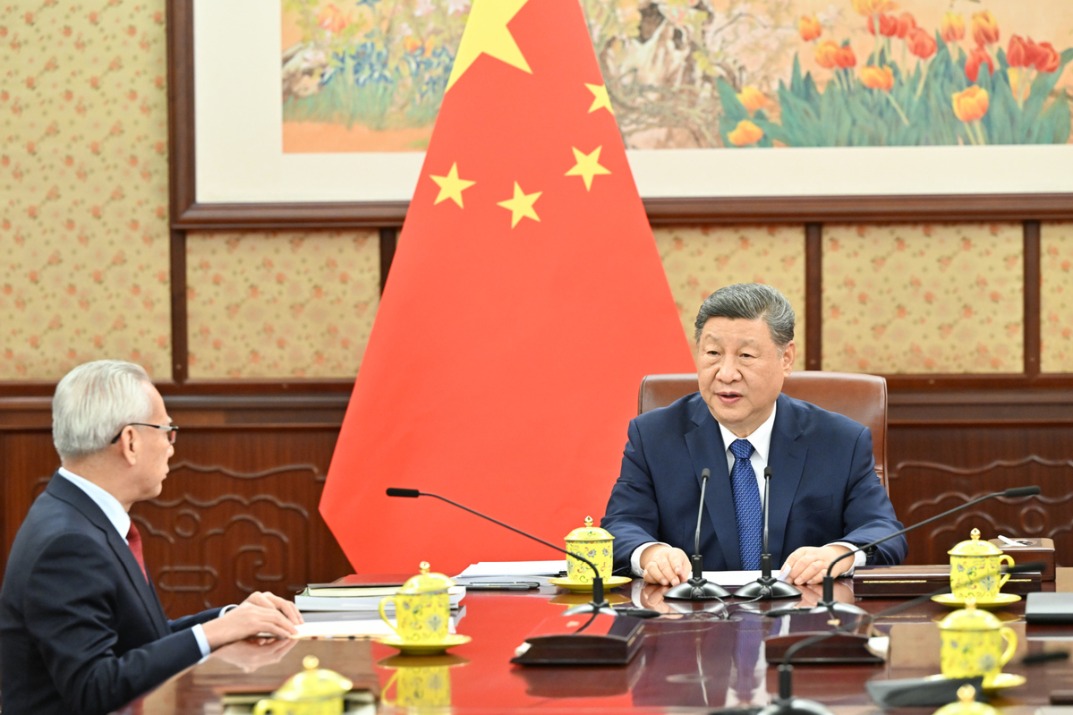Medical center aiming for lead role in global research
By Zhao Ruixue in Jinan | China Daily | Updated: 2019-08-28 09:32

Customized development poised to attract specialized health industries, with output projected to reach $14 billion in 10 years
The Shandong First Medical University will welcome its first batch of medical students next month at a center with aspirations of becoming a world leader in its field.
The university is located in the Jinan International Center for Medical Sciences, a 45 square kilometer community catering to educational bodies, hospitals, medical research centers, development platforms and medical and healthcare services. Construction work on 15 other projects is in full swing at the center, only a five-minute drive from Jinan West Railway Station, which connects the provincial capital with Beijing and other major cities.
"By 2030, the center will be developed into one that is equipped to have a competitive edge on the world stage," said Li Jianhua, deputy director of the administration committee of JIMC.
"Its output in 10 years is expected to hit 100 billion yuan ($14 billion)."
To date, JIMC has secured 144 medical projects, including a college of optometry jointly built by the center and the Pacific University in the United States, and facilities set up by OrigiMed, a molecular diagnostic information provider in Shanghai.
"Backed by the national-level big data platform at the center, our branch is set to be one that can cover our business interests in the northern part of China," said Wang Weifeng, senior director of the immunotherapy lab at OrigiMed.
Wang said the Jinan facilities will help the company develop its big data platform and conduct research and testing.
There is great potential for JIMC to grow into a global base in the field of medical sciences because it has customized development strategies and a sound business environment, said Wang who studied and worked at Harvard University in the medical department for over a decade.
JIMC is part of Shandong's efforts to shift drivers of economic growth from energy-consuming industries to ones that are efficient, environmentally friendly and innovative.
Last year, Shandong was given approval by the central government to build China's first comprehensive pilot area for new economic growth drivers.
But the province had already been upgrading traditional industries such as agriculture, chemical products, finance and tourism.
Shandong has also fostered emerging industries, such as the new generation of information technologies, new energy sources and new materials.
Zhang Xudong, deputy director of the development and reform commission of Qingdao in Shandong, said the efforts to change the direction of economic development were paying off.
One example is Qingdao Food. Founded in 1950, the company saw its profits increase 50 percent last year after it upgraded its production lines with the use of robots and computers and widened its production of cookies to include new flavors.
Cities in Shandong are also expanding their business reach into Europe and Asia via the rail network.
The coastal city of Yantai opened its first express rail service to Kazakhstan in May. Since then, four express links have been put into service, connecting Yantai with Almaty in Kazakhstan, Moscow in Russia, Hanoi in Vietnam and Duisburg in Germany.
Express rail services provide both Chinese and overseas companies with reasonable freight options, which are quicker than ship and cheaper than air, said Zou Qingzhong, chairman of Shandong Hi-speed Group which runs the express rail services.
Express rail services from Shandong can reach 39 cities in 11 countries involved in the Belt and Road Initiative.
Statistics provided by the provincial government showed the emerging industries' share of the province's GDP increased to 48 percent last year from 39 percent in 2016.
Xie Chuanjiao contributed to this story.
























